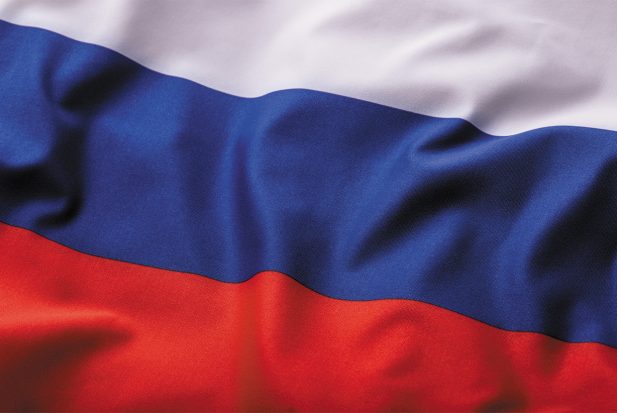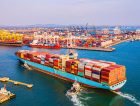
Eleanor Wragg speaks with Denis Urban, head of complex transactions, trade and export finance at VTB Bank, Evgeny Kravchenko, head of trade finance at Sberbank, and Nikita Gusakov, CEO of The Russian Agency for Export Credit and Investment Insurance (Exiar), to find out how the Covid-19 pandemic has affected export finance deal volumes, what challenges Russian exporters are facing, and what trends will characterise the market going into 2022.
Evgeny Kravchenko, head of trade finance, Sberbank
GTR: How do Russian corporates approach ECA finance?
Kravchenko: ECA-covered finance has become quite an expensive instrument for our clients, and is not as attractive as it used to be. This is for two main reasons: the first is that, unfortunately, Russia is still classified by the OECD as a category four country risk. The second is that foreign currency finance prices for Russian corporates have decreased dramatically during recent years. Therefore, more and more clients are starting to raise funds from Russian and foreign banks on a clean risk basis, without ECA involvement. On the other hand, we see increasing demand for Russian Exiar-covered finance, and this is becoming more and more important in light of non-commodity export growth.
GTR: Is there enough support for exports of Russian goods and services and where is this coming from?
Kravchenko: In December 2019, the government launched a national project titled ‘International Cooperation and Export’, and this roadmap is intended to result in a significant increase of non-energy exports, agricultural exports as well as services exports by 2024.
In recent years, the Russian government has made coordinated efforts to promote Russian exports abroad and to help exporters enter new foreign markets. These efforts include various governmental initiatives and programmes, such as the establishment of the state-owned Russian Export Center (REC), which offers a range of financial and non-financial support tools, facilitation and digitalisation of export processes, arranging various business missions to prospective markets and establishing acceleration programmes for SME exporters at regional and national levels.
In an effort to improve the business climate in Russia and help bypass trade barriers, commercial banks and key industries actively interact with domestic ministries, REC and other agencies. The ultimate objective is to ensure that necessary support is available at every stage of the export process.
These efforts are already paying off: in 2020 the growth of non-energy exports exceeded the plans by 11.6%.
GTR: What’s the export outlook for next year?
Kravchenko: Given the current shortage of oil supply in the market, we expect to see oil demand growth continue.
At the same time, the price forecasts remain at the current level or higher, despite plans by OPEC+ countries to increase oil production.
There are optimistic forecasts for Russia’s gas exports, taking into account the active recovery of Asian countries’ economies after Covid-19, China’s policy to replace coal with gas, and Europe’s need to fill its storage facilities before winter.
The outlook for a significant growth in copper prices in the medium and long term also remains unchanged. Copper is a raw material that is playing an active role in modern economic trends such as global electrification and the transition to renewable energy.
Overall, these trends lead us to expect an increase in our trade and export finance business in the near future.
Denis Urban, head of complex transactions, trade and export finance, VTB Bank
GTR: What are export finance volumes like currently, and have you seen any delays in deals closing throughout the pandemic?
Urban: Since the pandemic hit last year, the global order has significantly changed, and the financial sustainability of corporations and SMEs all over the world was affected. As a result, the export credit agencies of different countries released special pandemic programmes aimed at the comprehensive support of local companies. We strongly encourage these supportive measures and have some current and potential deals with ECAs, especially European ones, in the framework of such programmes.
Our clients are financially strong and successfully developing companies, and so they were able to cope with the pandemic difficulties. As a result, the issue of deal delays was not on our agenda and we saw no contraction of deal volumes. In fact, our business is steadily growing, with export finance exposure increasing by 11% for H1 2021.
GTR: In which sectors are deals closing?
Urban: VTB’s deal pipeline is diverse: deals have closed successfully in the chemical industry, construction, metals and mining, and others. However, in recent years, environmental, social and corporate governance (ESG) factors have been gaining in prominence, making renewables one of the most promising sectors. Recently, we have closed deals in this industry in cooperation with the world’s leading ECAs.
We expect to see the number of ESG financing opportunities expand rapidly in the near future, be that through KPI-linked government programmes or ESG debt instruments that are supported by VTB, the Russian ECA and the government. Such instruments could expand the list of companies and sectors that are able to enter the ESG financing market, which will definitely contribute to overcoming the major challenges faced by the Russian economy.
GTR: What challenges are you facing, and are they impacting the way you structure deals?
Urban: In the modern economy, there are many different factors that make almost every transaction unique. The Covid-19 pandemic has shown again that the OECD consensus rules might not be as flexible as the market requires them to be.
We have seen some changes made in the past months, however, there is certainly more that can be done, especially in the field of green energy financing. VTB has successfully structured such transactions recently, regardless of the complexity and the challenges we have faced.
In recent years, Russian corporates are paying more and more attention to ECA finance. ECA-backed deals comprise a number of advantages such as lower interest rate or longer tenor in comparison to a plain vanilla trade finance transaction.
VTB offers a wide range of products with different structures and financing purposes, covered either by Russian or foreign ECAs depending on the deal structure and parties involved.
Close cooperation between VTB and European ECAs allows us to provide competitive financing cost in line with other European banks and access to refinancing programmes. We can also offer individual solutions with the Chinese ECA, Sinosure, leveraging our branch in Shanghai.
GTR: What trends do you believe will characterise the export finance market in Russia in 2022?
Urban: According to reports released by the IMF and World Bank, the global economy is going to recover in 2022 and a number of economic indicators will return to pre-pandemic levels. This will lead to further growth in export volumes and, consequently, an increase in deal volumes.
Given this more positive economic outlook, we also expect to see a renewal of active construction and modernisation of export-oriented production works, as well as the implementation of new capex programmes. Alongside this, we expect to increase our pipeline of ESG deals.
Nikita Gusakov, CEO, Exiar
GTR: What have been the main trends in export finance in Russia for 2021?
Gusakov: For better or for worse, we are not disconnected from the rest of the world, so we have experienced the same trends as others during the pandemic. That said, in Russia we didn’t have lockdowns to the same extent, so in terms of business, activities are more or less normal.
During the beginning of the year we saw a pickup in requests of about 30-35%, especially from banks, and this was to be expected because when risks are increasing everybody starts to think more about insurance and ECA cover. This has also translated to a pickup in the volume of deals that went ahead this year versus 2020, which is around 10-15%, apples to apples.
If you look at the overall portfolio, the largest part comes from metals, fertilisers, chemicals and agriculture. They constantly dominate because this is the way that the Russian export basket is structured, and obviously this year we have seen growth in dollar terms – albeit not in volume terms – because the prices are booming.
GTR: Recent data shows that just 1% of Russian SMEs export their goods abroad, versus around 5-10% of SMEs in developed countries. What support are you providing to SME exporters, and what have been the results so far?
Gusakov: Last year, Exiar launched an SME programme, and it is going quite well. In the first six months, we completed over 50 transactions, which is a good amount since we are still fine tuning the product and haven’t yet rolled it out fully.
Through the programme we are offering export credit insurance to SMEs. So far, the product is well accepted by the SMEs, it is simple enough, they understand what it is, and it also helps us to cross-sell into our other products, because some of them are now moving from single-risk coverage on one contract to looking at the whole turnover policy. This has helped us to grow the number of supported exporters versus last year, and this trend looks set to continue.
GTR: What trends are you seeing in terms of deal structures?
Gusakov: Everybody needs innovative structures because if you don’t innovate then you will fall behind. We see a number of new initiatives, but one of the most interesting is a growth in bridge financing for foreign purchasers. Whenever you have a large project with a few ECAs and a number of banks coming together, it takes time, so we have seen a couple of clients obtaining bridge financing with a smaller number of banks as a first step in order to get the project moving forward, and then they do the full syndicated financing at a later stage.
GTR: Global demand for ECA support has increased since the beginning of the pandemic, and governments have acted to provide extra support to exporters. How has this played out in Russia, and is there a risk that commercial banks may be pushed out?
Gusakov: We see good support from the government. We are well capitalised and we continue to have available capacity. This year we have had a 10% increase in capital, which shows that the government is still willing to provide additional efforts and funds to support exporters.
With regard to the commercial banks, there is no competition; we see them as partners. Throughout the crisis, we have seen more demand from them for insurance. At the same time, we see them starting to become more aggressive. They are hungry for projects. They are not sitting tight and waiting for the crisis to pass – essentially, it’s the opposite: they are being quite active in looking for projects and structures. I think it’s a good trend.
GTR: What is the export environment like for Russian companies, given international sanctions and tariffs on Russian goods?
Gusakov: First of all, sanctions do not help. This is a clear and obvious statement, and it is a fact that the continued escalation is not helping anybody. That said, we are unfortunately now used to this situation, and companies and banks alike know how to do business in the circumstances that we have. In terms of trends, we see more demand for local currency transactions because people are looking for alternatives to using dollars, since compliance issues mean that there can be delays of weeks in processing payments. There is also a bilateral process in terms of becoming accustomed to the situation. It’s not only that Russian companies are used to having to do business in this way, but so too are their clients. It’s part of our daily routine now.
GTR: What are you expecting to see in the export finance landscape for 2022?
Gusakov: My hope is that the pandemic situation will have normalised, with the resumption of travel and business activities. This will in turn allow for a reactivation of transactions that were put on hold in various regions.
We also expect to see a stabilisation in commodities prices, albeit not a huge correction. However, the main factor to keep in mind will be interest rates.
In emerging markets, rates are already going up to fight inflation. In the US, inflation is high but the rates are yet to go up, and in Europe rates so far are staying low, but I think this super cycle of low rates is coming to an end, which will boost demand for ECA cover in the medium term.











